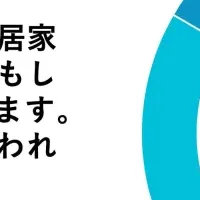
HIV Diagnosis Market Set to Reach USD 5.31 Billion by 2030 with Strong Growth Rate
The global market for HIV diagnosis is on track for substantial growth, with projections indicating it will soar to USD 5.31 billion by the year 2030. Currently, the market is valued at approximately USD 2.96 billion in 2024, and it is set to expand at an impressive compound annual growth rate (CAGR) of 10.3%. This rapid growth can be attributed to several pivotal factors including the increasing prevalence of HIV/AIDS, a surge in blood transfusions and donations, advantages presented by point-of-care (POC) diagnostic kits, and a growing focus on initiatives aimed at raising HIV awareness.
Governmental health initiatives and various public campaigns promoting HIV testing play a crucial role in boosting the market dynamics. Furthermore, continuous innovations in testing technology—such as the advent of rapid tests and self-testing kits—are improving both the accuracy of tests and the ease of use, which enhances patient compliance and supports broader adoption of testing methods. Despite these optimistic trends, the market does face challenges including the high costs associated with nucleic acid testing and operational hurdles, compounded by a shortage of skilled personnel in laboratory settings.
The product mix in the HIV diagnostics market is categorized into consumables, instruments, and software services. As of 2024, the consumables segment claims the largest market share, primarily due to the frequent purchasing habits of laboratories and hospitals that rely on these items. This dominance is further fostered by the escalating presence of HIV and supportive government policies aimed at introducing advanced consumables.
The market is also segmented by testing type into screening tests, confirmatory tests, and monitoring tests. Notably, the monitoring tests segment is predicted to achieve the highest growth rate, driven by heightened awareness regarding HIV testing and the widespread establishment of diagnostic labs focusing on HIV/AIDS.
In terms of end users, diagnostic laboratories currently have the largest market share, a position bolstered by an increasing incidence of HIV/AIDS, an upsurge in diagnostic labs, and advancements in POC instruments.
Examining geographical distribution, North America predominantly leads the global market. Factors such as a rising prevalence of HIV/AIDS, innovations in POC technologies, and increasing public awareness are significant drivers in this region. Conversely, the Asia Pacific market is expected to experience the highest CAGR of 12.5% over the forecast period. The factors fueling this growth include a rise in the target patient population, economic expansions, an increase in the availability of cutting-edge POC products, supportive governmental programs for HIV awareness, and the growing footprint of global players within this market.
Prominent companies leading the charge in the HIV diagnostics landscape include Abbott, Siemens Healthineers AG, Thermo Fisher Scientific, and several others. These organizations are continuously innovating, enhancing their product portfolios, and strategically positioning themselves within the dynamic market environment. For instance, Abbott is not just maintaining its position as a key player but also expanding its market presence by undertaking collaborative ventures and acquisitions aimed at fortifying its product range.
The rapid evolution of the HIV diagnosis market reflects broader trends in healthcare where early detection and improved access to health services are paramount. As such, the ongoing developments in diagnostic solutions are not only poised to enhance HIV testing rates but also to contribute positively to public health outcomes.
In conclusion, as the HIV diagnostics market continues to evolve with advancements in technology and increasing government initiatives, it represents a crucial aspect of not only combatting the HIV/AIDS epidemic but also in enhancing the overall quality of healthcare globally.
Governmental health initiatives and various public campaigns promoting HIV testing play a crucial role in boosting the market dynamics. Furthermore, continuous innovations in testing technology—such as the advent of rapid tests and self-testing kits—are improving both the accuracy of tests and the ease of use, which enhances patient compliance and supports broader adoption of testing methods. Despite these optimistic trends, the market does face challenges including the high costs associated with nucleic acid testing and operational hurdles, compounded by a shortage of skilled personnel in laboratory settings.
The product mix in the HIV diagnostics market is categorized into consumables, instruments, and software services. As of 2024, the consumables segment claims the largest market share, primarily due to the frequent purchasing habits of laboratories and hospitals that rely on these items. This dominance is further fostered by the escalating presence of HIV and supportive government policies aimed at introducing advanced consumables.
The market is also segmented by testing type into screening tests, confirmatory tests, and monitoring tests. Notably, the monitoring tests segment is predicted to achieve the highest growth rate, driven by heightened awareness regarding HIV testing and the widespread establishment of diagnostic labs focusing on HIV/AIDS.
In terms of end users, diagnostic laboratories currently have the largest market share, a position bolstered by an increasing incidence of HIV/AIDS, an upsurge in diagnostic labs, and advancements in POC instruments.
Examining geographical distribution, North America predominantly leads the global market. Factors such as a rising prevalence of HIV/AIDS, innovations in POC technologies, and increasing public awareness are significant drivers in this region. Conversely, the Asia Pacific market is expected to experience the highest CAGR of 12.5% over the forecast period. The factors fueling this growth include a rise in the target patient population, economic expansions, an increase in the availability of cutting-edge POC products, supportive governmental programs for HIV awareness, and the growing footprint of global players within this market.
Prominent companies leading the charge in the HIV diagnostics landscape include Abbott, Siemens Healthineers AG, Thermo Fisher Scientific, and several others. These organizations are continuously innovating, enhancing their product portfolios, and strategically positioning themselves within the dynamic market environment. For instance, Abbott is not just maintaining its position as a key player but also expanding its market presence by undertaking collaborative ventures and acquisitions aimed at fortifying its product range.
The rapid evolution of the HIV diagnosis market reflects broader trends in healthcare where early detection and improved access to health services are paramount. As such, the ongoing developments in diagnostic solutions are not only poised to enhance HIV testing rates but also to contribute positively to public health outcomes.
In conclusion, as the HIV diagnostics market continues to evolve with advancements in technology and increasing government initiatives, it represents a crucial aspect of not only combatting the HIV/AIDS epidemic but also in enhancing the overall quality of healthcare globally.
Topics Health)










【About Using Articles】
You can freely use the title and article content by linking to the page where the article is posted.
※ Images cannot be used.
【About Links】
Links are free to use.